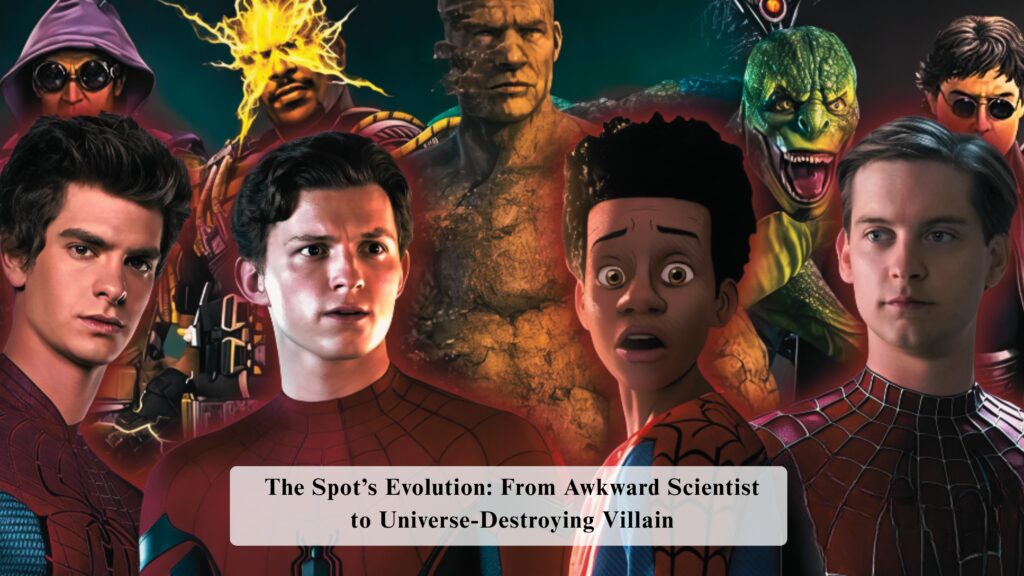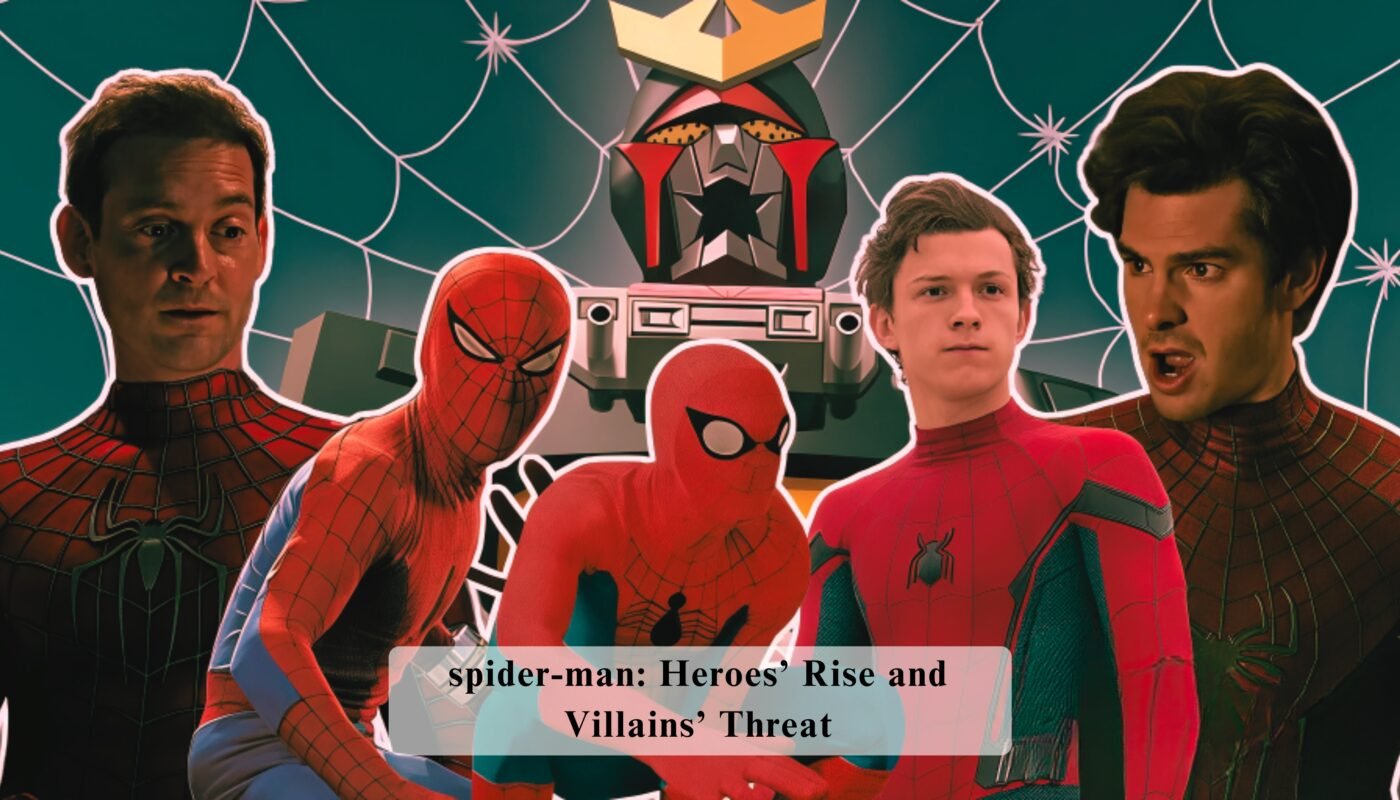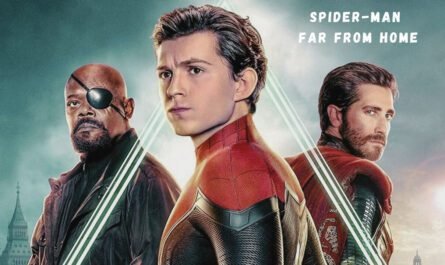Spider-Man Across the Spider-Verse has expanded the Spider-Man mythos in extraordinary ways, blending multiple universes, complex characters, and deep emotional arcs that resonate with audiences worldwide. In this article, we will explore five crucial facets of the film’s story that define its impact: Miguel O’Hara’s complicated relationship with Miles Morales, the real story behind Miles’ origin and his multiversal error, Gwen Stacy’s struggles both personally and with her family, The Spot’s evolution from a quirky scientist to a catastrophic villain, and the all-important concept of canon events and their significance in the Spider-Verse. Let’s dive deep into these elements to better understand the intricate storytelling of Spider-Man Across the Spider-Verse.
From Ally to Antagonist: Miguel O’Hara’s Complex Relationship with Miles Morales
In Spider-Man Across the Spider-Verse, Miguel O’Hara, also known as Spider-Man 2099, begins as a powerful ally to Miles Morales but soon emerges as a contentious figure whose decisions strain their partnership. Miguel’s journey is layered with conflict born from his stern adherence to the rules governing the multiverse, which often clashes with Miles’ more empathetic and impulsive nature.
Miguel’s initial role as a mentor to Miles reflects his desire to prepare the young hero for the dangers of the multiverse. However, his rigid belief in preserving canon events causes friction, especially when Miles’ choices threaten to disrupt the established order. Miguel’s insistence on controlling the narrative pushes him toward a more antagonistic stance, making him a morally complex figure who is neither fully villain nor hero.
This tension between Miguel and Miles highlights the core conflict in Spider-Man Across the Spider-Verse — the balance between fate and free will. Miguel represents the necessity of order and consequence, while Miles embodies hope, change, and breaking free from predetermined paths. Their dynamic is a compelling portrayal of how different perspectives can both protect and challenge the multiverse’s fragile harmony.
The Truth About Miles’ Origin and His Multiversal Mistake
Miles Morales’ origin story is iconic, but Spider-Man Across the Spider-Verse reveals new layers that complicate his hero’s journey. Unlike earlier versions of Spider-Man who gained powers through straightforward accidents, Miles’ powers and role are tightly interwoven with the multiverse’s fragile structure.
The film exposes a critical multiversal mistake: Miles’ actions inadvertently triggered a catastrophic event known as “The Blip,” a fracture that risks collapsing entire universes. This blunder stems from his deep desire to save loved ones and alter fate, a common theme among heroes but one that comes with enormous consequences in this narrative.
Understanding Miles’ mistake is essential to appreciating the stakes of the movie. It’s not just a battle against villains; it’s a race to fix the damage done to the very fabric of reality. This revelation humanizes Miles, showing that even the greatest heroes make mistakes, but also sets the stage for his growth as he learns to take responsibility and face the repercussions of his actions.
Gwen’s Band, Her Father, and Her Struggle for Acceptance
Gwen Stacy’s story in Spider-Man Across the Spider-Verse adds emotional depth through her involvement in a band, her complicated relationship with her father, and her ongoing quest for acceptance. Gwen’s character balances youthful rebellion and vulnerability, reflecting a struggle that many viewers can relate to.
Her band represents a personal outlet and a symbol of independence, helping her cope with the pressure of being a hero and the expectations of those around her. Meanwhile, her father’s complicated stance towards her reveals themes of family tension and misunderstanding. His struggle to accept Gwen’s dual life as a regular teenager and a superhero is a poignant subplot that emphasizes the personal costs of heroism.
Gwen’s fight for acceptance — both from her father and within herself — parallels the broader theme of identity in the Spider-Verse. She must reconcile her responsibilities as Spider-Woman with her desires and fears, making her journey both inspiring and heart-wrenching.
The Spot’s Evolution: From Awkward Scientist to Universe-Destroying Villain

One of the most intriguing characters in Spider-Man Across the Spider-Verse is The Spot. Initially introduced as an awkward scientist experimenting with portals and spatial anomalies, The Spot’s evolution into a universe-destroying villain is a highlight of the film’s darker tones.
His transformation symbolizes how power without control or morality can become dangerously destructive. The Spot’s mastery over dimensional rifts gives him immense power, but also detaches him from empathy and reason, turning him into a threat not just to individual heroes but to the entire multiverse.
The Spot’s arc serves as a cautionary tale within the narrative: the misuse of scientific knowledge without ethical boundaries can have catastrophic consequences. His escalating threat adds tension and urgency to the film’s climax, forcing heroes like Miles and Miguel to confront not only external dangers but also their inner conflicts.
The Web of Destiny: Why Canon Events Matter in the Spider-Verse
At the heart of Spider-Man Across the Spider-Verse lies the concept of canon events — pivotal moments in each Spider-Person’s life that must occur to maintain the stability of the multiverse. These events form a web of destiny, a complex network of cause and effect that defines who the heroes are and what the universe expects of them.
The movie emphasizes the importance of these canon events through the struggles of characters like Miguel, who is obsessed with preserving them, and Miles, who challenges their inevitability. This clash raises philosophical questions about destiny, free will, and the possibility of change.
Understanding canon events is crucial to grasping the stakes of the story. If these events are disrupted, the multiverse risks unraveling, but adherence to them can also mean sacrificing personal desires and happiness. This tension between duty and individuality enriches the Spider-Verse narrative, making it not only an action-packed adventure but a thoughtful exploration of identity and destiny.
Conclusion
Spider-Man Across the Spider-Verse is a masterpiece of storytelling that weaves together complex characters and multiversal stakes. From Miguel O’Hara’s shifting role between ally and antagonist, to Miles Morales’ poignant origin and mistakes, Gwen Stacy’s emotional battles, The Spot’s dark transformation, and the all-encompassing importance of canon events — the film offers a rich tapestry of themes and narratives.
By exploring these five critical aspects, fans and newcomers alike can gain a deeper appreciation of how the Spider-Verse continues to evolve and inspire, proving that even in a world of infinite possibilities, the heart of a hero remains constant.





Can you be more specific about the content of your article? After reading it, I still have some doubts. Hope you can help me.